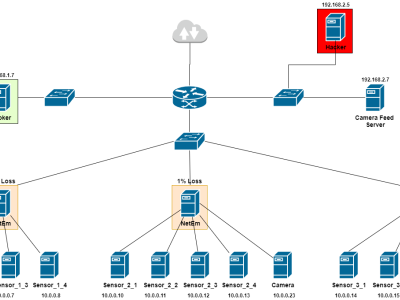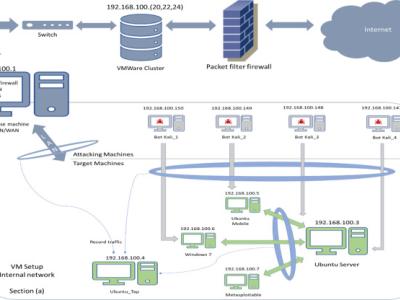M2M using OPC UA

- Citation Author(s):
-
Rui Pinto (Research Center for Systems and Technologies)
- Submitted by:
- Rui Pinto
- Last updated:
- DOI:
- 10.21227/ychv-6c68
- Data Format:
- Links:
 3548 views
3548 views
- Categories:
- Keywords:
Abstract
Cyber-Physical Production Systems (CPPS) are the key enabling for industrial businesses and economic growth. The introduction of the Internet of Things (IoT) in industrial processes represents a new Internet revolution, mostly known as 4th Industrial Revolution, towards the Smart Manufacturing concept. Despite the huge interest from the industry side to innovate their production systems, in order to increase revenues at lower costs, the IoT concept is still immature and fuzzy, which increases security related risks in industrial systems. This dataset was generated by implementing and injecting various attacks on a OPC UA based CPPS testbed, and it aim to enable users to evaluate the effectiveness of different techniques for developed Intrusion Detection Systems (IDS) in the manufacturing context.
Instructions:
The generation of the dataset containing OPC UA traffic was possible due to the setup and execution of a laboratory CPPS testbed. This CPPS uses OPC UA standard for horizontal and vertical communications.
Regarding the CPPS testbed setup, it consists on seven nodes in the network.Each network node consist on a Raspberry Pi device, running the Python FreeOpcUa implementation. In this configuration, there are two production units, each one containing three devices, and one node representing a Manufacturing Execution System (MES). Each device implements both OPC UA server and client, where the server publish to a OPC UA variable updates regarding sensor readings and the client subscribes all OPC UA variables from all other devices in the same production unit. On the other side, the MES only implements the OPC UA client, which subscribes all OPC UA variables from all devices in both production units. Also, connected to this network, is an attack node as it is assumed that the attacker already gained access to the CPPS network.
After setting up the CPPS testbed, a python implementation that implements Tshark was used to capture OPC UA packets and export this traffic to a csv file format dataset. This traffic includes both normal and anomalous behaviour. Anomalous behaviour is achieved with the malicious node, which injects attacks into the CPPS network, targeting one or more device nodes and the MES. The attacks selected for the malicious activities are:
- Denial of Service(DoS);
- Eavesdropping or Man-in-the-middle (MITM) attacks;
- Impersonation or Spoofing attacks.
To perform the attacks mentioned, a python script is used, which implements the Scapy module for packet sniffing, injection and modification. Regarding the dataset generation, another python script, that implements Tshark (in this case Pyshark) was used to capture only OPC UA packets and export this traffic to a csv file format dataset. Actually, the OPC UA packets are converted to bidirectional communication flows, which are characterized by the following 32 features:
- src_ip: Source IP address;
- src_port: Source port;
- dst_ip: Destination IP address;
- dst_port: Destination port;
- flags: TCP flag status;
- pktTotalCount: Total packet count;
- octetTotalCount: Total packet size;
- avg_ps: Average packet size;
- proto: Protocol;
- service: OPC UA service call type;
- service_errors: Number of service errors in OPC UA request responses;
- status_errors: Number of status errors in OPC UA request responses;
- msg_size: OPC UA message transport size;
- min_msg_size: minimum OPC UA message size;
- flowStart: Timestamp of flow start;
- flowEnd: Timestamp of flow end;
- flowDuration: Flow duration in seconds;
- avg_flowDuration: Average flow duration in seconds;
- flowInterval: Time interval between flows in seconds;
- count: Number of connections to the same destination host as the current connection in the past two seconds;
- srv_count: Number of connections to the same port number as the current connection in the past two seconds;
- same_srv_rate: The percentage of connections that were to the same port number, among the connections aggregated in Count;
- dst_host_same_src_port_rate: The percentage of connections that were to the same source port, among the connections having the same port number;
- f_pktTotalCount: Total forward packets count;
- f_octetTotalCount: Total forward packets size;
- f_flowStart: Timestamp of first forward packet start;
- f_rate: Rate at which forward packets are transmitted;
- b_pktTotalCount: Total backwards packets count;
- b_octetTotalCount: Total backwards packets size;
- b_flowStart: Timestamp of first backwards packet start;
- label: Binary label classification;
- multi_label: Multi classification labeling.
The generated dataset has 33.567 normal instances, 74.013 DoS attack instances, 50 impersonation attack instances, and 7 MITM attack instances. This gives a total of 107.634 instances. Also, all attacks were grouped into one class (anomaly - 1) and the rest of the instances belong to the normal class (0).
For more information, please contact the author: Rui Pinto (rpinto@fe.up.pt).







